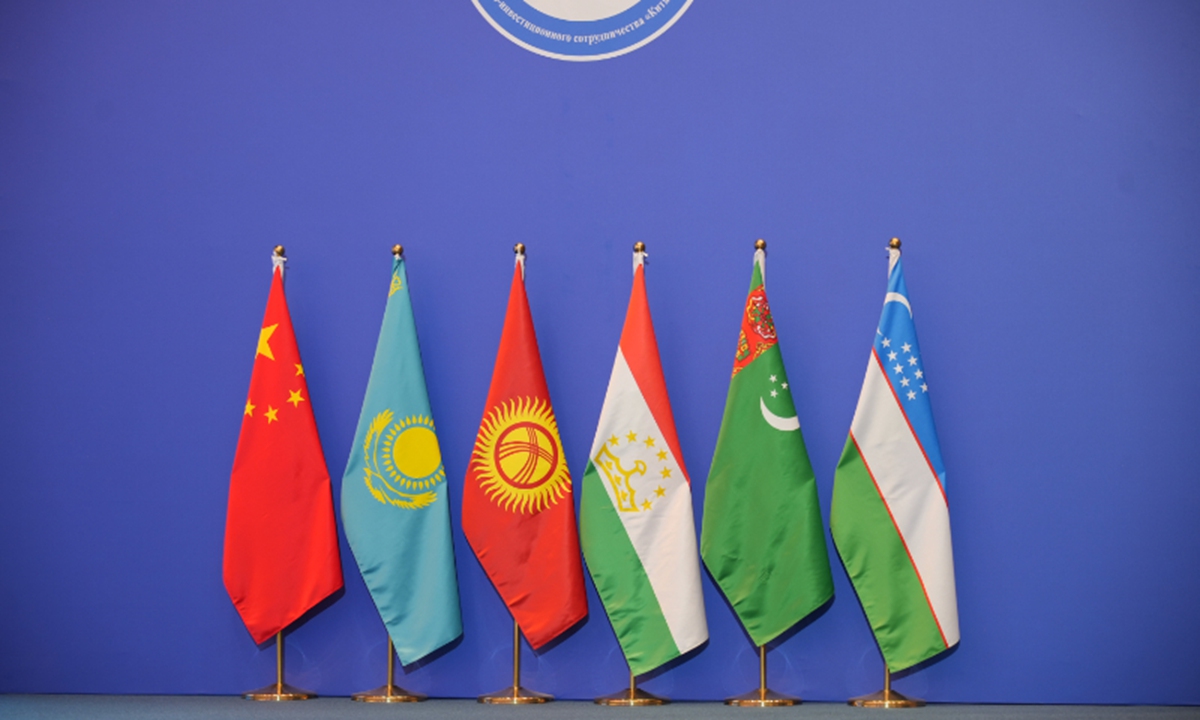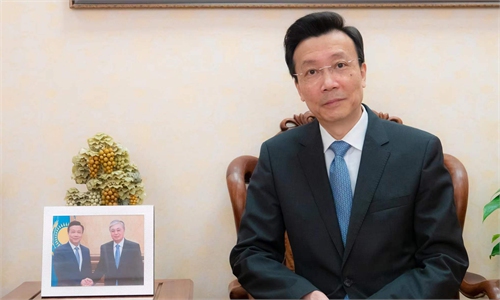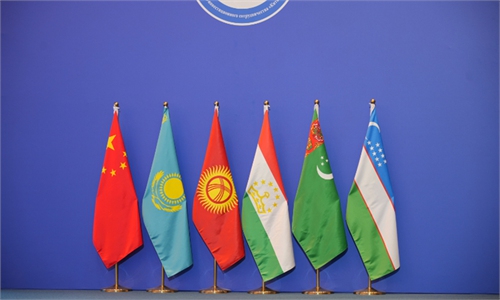
China + Central Asia (C+C5) Photo: VCG
For the first time in over 30 years the top leaders from China and the five Central Asian countries - Kazakhstan, Kyrgyzstan, Tajikistan, Turkmenistan, and Uzbekistan - will meet in person to discuss their burgeoning nation-nation ties and how to enter a new era of closer trade, economic, political and security cooperation.
It is of historic importance and global significance for the six-nation summit to be held in northwestern China's Xi'an city, where the ancient Silk Road first began about 1,600 years ago in the Tang Dynasty.
The summit meeting is already attracting global attention, as the meeting will have a positive effect and profound implications on the long-term and strategic partnership between China and the five Central Asian nations, whose market economy is rapidly emerging.
Possibly, a new and more effective format of partnership would be sought and found to integrate the Central Asian region with China's huge dynamic economy and its burgeoning consumer market. Both China and Central Asia region are deemed the driving force of the global economy.
Central Asia is expected to see even greater gains through closer economic ties with China as the region seeks to lift up living standards. Will Central Asia retake a key role at the center of the massive Eurasian landmass? The answer is yes. China and the Central Asia share traditional friendship and a lot of common interests, and their cooperation and partnership will not only bring even great benefits to the involved countries, but also serve the global good.
According to a Silk Road Briefing held last month, Chinese investments in Central Asia region as of the end of 2021 neared $40 billion annually, which is expected to keep edging up over the coming years, Chinese experts say.
The China-Kazakhstan Horgos International Border Cooperation Center and the China-Kyrgyzstan-Uzbekistan Railway are exemplary of the cooperation, as the center opens up a wide range of opportunities for the Kazakh people to conduct business and purchase duty-free goods in a convenient way.
This year marks the 10th anniversary of China-proposed Belt and Road Initiative. Over the last 10 years, Central Asia has become a demonstration zone of how the BRI was first agreed and implemented in the region, which later led to broad win-win results, including a long list of infrastructure connectivity projects, which assisted the landlocked region in becoming better linked with the outside world. Long term cooperation has also been characterized by a high degree of their economic complementarity as China is already the world's largest manufacturing center.
Tajikistan was the first country in the world to sign a memorandum of understanding (MOU) with China on building the Silk Road Economic Belt, and to date, all the five Central Asia countries have joined the initiative. The summit meeting will inevitably lead to the elevation of China and Central Asian countries' relations.
Over the past decade, mutual trust between people of Central Asia and China has been constantly accelerated and strengthened, laying a solid foundation for a closer and more engaging BRI partnership in all aspects as all parties push toward high-quality economic development, against the backdrop of rising global volatility.
The Central Asia region is an important logistics channel linking China's huge make with Central Asia, the Middle East and Europe, and is a key passage way for the China-Europe Freight Train service. In assessing geographic strategy, China and the five countries are natural partners and they are obliged to support one another on the global stage.
Chinese analysts point out that the China-Central Asia Summit will provide new impetus for the high-quality implementation of the Belt and Road Initiative. One of the key aspects of the cooperation is the development of a program, called "Green Silk Road" that is the use of green development technology, innovative solutions and advanced technologies to achieve environmental efficiency and sustainability - erecting the region into a highland of global low-carbon growth.
Following the summit, a growing number of major Chinese State-owned enterprises will be motivated to play a pivotal role in leading the construction of more advanced infrastructure connectivity projects in Central Asian countries, expressways and modern railways that meet the demands of local conditions.
For an example, China Civil Engineering Construction Corporation has stated that it will join forces with local companies to build a railway tunnel and giant bridge for Vahdat-Yavan Railway in Tajikistan. The rail link is an important part of the international rail network linking China to Central Asia, Afghanistan and Iran.
Energy and resources cooperation is another focal point of cooperation, as exemplified by the China-Central Asia Gas Pipeline. The line is China's first transnational natural gas transmission pipeline, and last year, it supplied more than 43 billion cubic meters of natural gas to China.
Cooperation on security issues will be another prominent topic during the summit considering the risks and security challenges arising from the US' hasty withdrawal from Afghanistan and an increasingly volatile world, including the US government's trade protectionism, monetary policy recklessness, and the deepening conflict in Ukraine which originated from NATO's provocative eastern expansion.
The author is an editor with the Global Times. bizopinion@globaltimes.com.cn



